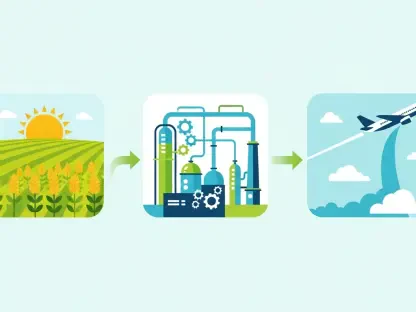The world is in the midst of a transformative energy shift, with sustainability no longer just a hearsay but a critical need. As your counterparts strive to meet green goals, reduce carbon footprints, and comply with stringent regulations, the demand for cleaner energy sources is on the rise. At the heart of this shift, however, is the question:
Is battery storage truly key to unlocking a sustainable energy revolution?
We are yet to find out.
In this article, we explore the role of battery storage in this transition, its potential to reshape the energy landscape, and the challenges that need to be addressed so that it can power us to net-zero.
The Rise of Renewable Energy
A Boon for Sustainability…
Renewable energy sources like solar and wind have gained tremendous traction over the last decade, with more businesses moving away from fossil fuels.
However, one significant challenge has emerged: intermittency. Unlike traditional energy sources, renewables like wind and solar aren’t consistent. When the wind stops blowing, or the sun stops shining, energy production can come to a halt.
This variability makes it your primary concern, hence limiting the reliability of renewables as a standalone solution.
Enter battery storage, with the promise to fill in the gaps and provide the consistency businesses like yours need to make the most of renewable energy.
It’s Role in Energy Management
Battery storage systems store excess energy generated during peak renewable production times and release it when demand is high or when renewable sources aren’t producing.
This capability makes them pivotal in smoothing out energy supply and demand, ensuring that businesses always have access to power—even during blackouts or off-peak renewable generation times.
Battery storage’s ability to store energy and manage it efficiently offers several benefits for your business:
Price arbitrage: Storing energy when prices are low and using it when rates spike can lead to significant cost savings over time.
Grid support: Large-scale battery systems regulate frequency and shift loads in energy grids, stabilizing supply during peak demand periods.
Regulatory compliance: As many governments introduce stricter environmental regulations, businesses that adopt battery storage can demonstrate compliance and commitment to sustainability.
Sustainability goals: Battery storage directly aligns with corporate responsibility. Smart leaders who choose to reduce their carbon footprint by incorporating renewable energy and storage solutions will not only benefit the planet but also appeal to environmentally conscious consumers and investors.
The Technology Behind the Batteries
The two most common types of battery storage systems are lithium-ion and flow batteries.
Lithium-ion tech—popularized by electric vehicles, has quickly become the standard for most grid-scale storage systems. These batteries are relatively compact, efficient, and have a long lifespan, making them ideal for B2B applications.
Flow batteries, on the other hand, are better suited for larger-scale storage and can handle extensive discharge cycles without degradation. While they have yet to match the mass adoption of lithium-ion systems, their potential for long-duration storage is being explored in several pilot projects around the world.
However, it’s not all smooth sailing, current battery technologies are still facing significant challenges, especially regarding:
Cost: While prices have dropped considerably over the past decade, they remain a major investment. For smaller businesses, the initial capital expenditure can be a significant financial compromise.
Resource dependency: The reliance on raw materials like lithium, cobalt, and nickel raises environmental and ethical concerns. Mining these materials often involves significant ecological damage, not to mention labor rights issues in some regions.
Recycling and disposal of batteries: As many components are not easily biodegradable, they pose their own set of environmental risks
Why Battery Storage is a Game-changer for B2b
For many businesses, sustainability isn’t just about being eco-friendly—it’s also about cost-effectiveness and energy security.
It hits the sweet spot, providing a solution that aligns with multiple strategic priorities.
Consider industries that rely on energy-intensive operations, such as manufacturing, logistics, and data centers. The ability to store excess energy produced during low-demand periods and deploy it during high-demand hours not only optimizes operational costs but also reduces reliance on grid power.
Additionally, having a buffer in place ensures that operations can continue even in the event of power outages—a critical advantage your business needs.
Also, regulatory pressures are pushing companies to move towards more sustainable practices. Governments around the globe are introducing incentives for businesses to invest in renewable energy and battery storage solutions, further solidifying them as a viable option and cementing their place in the corporate ecosystem.
To Sum It All Up
Battery storage presents a massive opportunity for businesses looking to integrate renewable energy while maintaining a reliable and stable power supply.
Yet, several challenges remain:
Ongoing research is needed to improve battery efficiency, extend lifecycle, and reduce dependency on rare materials.
Governments play a role in incentivizing the adoption of battery storage, policies such as tax credits, rebates, or direct subsidies can make these technologies more accessible to businesses.
Many companies may not want to invest in the upfront costs of battery storage systems. This has given rise to Energy as a Service (EaaS) models, where companies pay for energy storage services without owning the infrastructure. However, this is not a sustainable model.
For battery storage to truly revolutionize energy systems, it must scale to meet global demand.
Conclusion
A Power Shift on the Horizon…
Battery storage may not be the single, magical solution to the world’s energy problems, but it certainly can be a means to get there. Over time, as the technology matures, costs come down, and recycling initiatives improve, it could pave the way for a more sustainable and resilient energy future for businesses.
The future of energy is undeniably renewable, and battery storage will be instrumental in realizing it.
This tech is a strategic investment that offers the potential to cut costs, increase energy efficiency, and meet sustainability targets. With governments’ push for greener solutions, those who embrace battery storage today, are positioning themselves as leaders in the new energy landscape. Let it be you.









